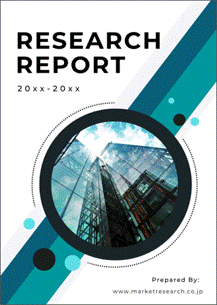 | • レポートコード:MRC2203A744 • 出版社/出版日:Mordor Intelligence / 2022年1月 • レポート形態:英文、PDF、110ページ • 納品方法:Eメール(受注後2-3営業日) • 産業分類:医療 |
| Single User | ¥703,000 (USD4,750) | ▷ お問い合わせ |
| Site Licence | ¥962,000 (USD6,500) | ▷ お問い合わせ |
| Corporate License | ¥1,295,000 (USD8,750) | ▷ お問い合わせ |
• お支払方法:銀行振込(納品後、ご請求書送付)
レポート概要
| Mordor Intelligence社の本調査資料では、世界の貧血治療市場について調査・分析し、イントロダクション、調査手法、エグゼクティブサマリー、市場動向、疾患別(鉄欠乏性貧血、CKD(慢性腎臓病)貧血、鎌状細胞性貧血、非形成性貧血、その他)分析、地域別(北米、ヨーロッパ、アジア太平洋、中東・アフリカ、南米)分析、競争状況、市場機会・将来の傾向などの項目を掲載しています。 ・イントロダクション ・調査手法 ・エグゼクティブサマリー ・市場動向 ・世界の貧血治療市場規模:疾患別(鉄欠乏性貧血、CKD(慢性腎臓病)貧血、鎌状細胞性貧血、非形成性貧血、その他) ・世界の貧血治療市場規模:地域別(北米、ヨーロッパ、アジア太平洋、中東・アフリカ、南米) ・競争状況(Akebia Therapeutics、Bluebird Bio, Inc.、GlaxoSmithKline Plc.、...) ・市場機会・将来の傾向 |
The Anemia treatment market is expected to witness robust growth over the forecast period which is majorly attributed to the increasing cases of anemia across the globe, increasing pipelines for anemia drugs, and increasing number of women with reproductive age.
The National Institute of Health has stated that anemia affects around one third of the world population and contributes to increased morbidity and mortality, decreased work productivity, and impaired neurological development. The population which is more vulnerable to this disease is the children below age 5 years and the pregannat women. There are effeorts being made to reduce the burden of this disease. For instance, the WHO Global Nutrition Target 2025 on anemia aims to reduce anemia in WRA by 50% by 2025. Hence, with such efforts, there will be an increase in the number of people going for treatemnt and ultimately the market will grow.
Key Market Trends
Iron Deficiency Anemia to Witness Healthy CAGR Over the Forecast Period
Iron deficiency anemia is the most common type of anemia in which the blood does not have adequate amount of reb blood cells which carry oxygen to the body’s tissues. As per the National Institute of Health, Iron Deficiency Anemia is one of the main nutritional deficiency disorders affecting large fractions of the population, particularly such physiological groups as children, menstruating women and pregnant women.
Similarly in the Asian countries such as India and China, iron deficiency anemia is posing a burden with increasing prevalence of the disease across the women. Therefore, it is believed that the segment will witness a healthy growth over the forecast period.
North America Dominates the Market
North America dominated the overall anemia treatment market, with the United States being the major contributor to the market. According to the study of Mechanisms of Ageing and Development, 2018, iron deficiency anemia is highly prevalent in pregnant women and children. In the United States, the prevalence rate of iron deficiency anemia was found to be around 10% in women of child bearing age while one third of the children (12 months to 36 months) are likely to suffer from it. Moreover, the increasing product approvals related to anemia treatment are expected to be the major contributor in the market. For instance, recently, Pharmacosmos AS, recieved an US FDA approval for it’s product “Monoferric” for the treatment of iron deficiency anemia. Hence, the high prevalence rate of anemia is expected to boost the growth of the market in North America.
Competitive Landscape
The market for anemia treatment is moderately competitive with a presence of most of the international companies. Companies are focusing on developing the drugs or therapies to treat anemia. Entry to this market is difficult as the company has to go through stringent regulations. However, it is believed that in the future, few small to mid sized companies will be entering in the market and gain a substantial share.
Additional Benefits:
- The market estimate (ME) sheet in Excel format
- 3 months of analyst support
1 INTRODUCTION
1.1 Study Assumptions
1.2 Scope of the Study
2 RESEARCH METHODOLOGY
3 EXECUTIVE SUMMARY
4 MARKET DYNAMICS
4.1 Market Overview
4.2 Market Drivers
4.2.1 Increasing Cases of Anemia Across the Globe
4.2.2 Increasing Number of Women With Reproductive Age
4.3 Market Restraints
4.3.1 Lack of Awareness About the Treatment in Developing Regions
4.3.2 High Cost of Drugs
4.4 Porter’s Five Force Analysis
4.4.1 Threat of New Entrants
4.4.2 Bargaining Power of Buyers/Consumers
4.4.3 Bargaining Power of Suppliers
4.4.4 Threat of Substitute Products
4.4.5 Intensity of Competitive Rivalry
5 MARKET SEGMENTATION
5.1 By Type of Disease
5.1.1 Iron Deficiency Anemia
5.1.2 CKD (Chronic Kidney Disease) Anemia
5.1.3 Sickle Cell Anemia
5.1.4 Aplastic Anemia
5.1.5 Others
5.2 Geography
5.2.1 North America
5.2.1.1 United States
5.2.1.2 Canada
5.2.1.3 Mexico
5.2.2 Europe
5.2.2.1 Germany
5.2.2.2 United Kingdom
5.2.2.3 France
5.2.2.4 Italy
5.2.2.5 Spain
5.2.2.6 Rest of Europe
5.2.3 Asia-Pacific
5.2.3.1 China
5.2.3.2 Japan
5.2.3.3 India
5.2.3.4 Australia
5.2.3.5 South Korea
5.2.3.6 Rest of Asia-Pacific
5.2.4 Middle-East and Africa
5.2.4.1 GCC
5.2.4.2 South Africa
5.2.4.3 Rest of Middle-East and Africa
5.2.5 South America
5.2.5.1 Brazil
5.2.5.2 Argentina
5.2.5.3 Rest of South America
6 COMPETITIVE LANDSCAPE
6.1 Company Profiles
6.1.1 Akebia Therapeutics
6.1.2 Bluebird Bio, Inc.
6.1.3 GlaxoSmithKline Plc.
6.1.4 Global Blood Therapeutics, Inc.
6.1.5 Pieris Pharmaceuticals, Inc.
6.1.6 Sanofi
6.1.7 Takeda Pharmaceutical Company
6.1.8 Allergan
6.1.9 Pharmacosmos A/S
6.1.10 Pfizer Inc.
6.1.11 AMAG Pharmaceuticals Inc.
7 MARKET OPPORTUNITIES AND FUTURE TRENDS